Kenya Fauna
If you like to travel, you may need to understand more about Kenya Fauna. On this site allow us to introduce to you all the information you may want to know about the fauna of Kenya.
Kenya’s natural vegetation is as diverse as its climate and topography would suggest. Dean & Trump (1983) mapped 19 distinct biotic communities; some of which can be lumped under general headings.
Kenya’s natural vegetation is as diverse as its climate and topography would suggest. Dean & Trump (1983) mapped 19 distinct biotic communities; some of which can be lumped under general headings.
Afro-alpine moorland (1.2 % of total land area) occurs above c. 3,000 m, on Mt Kenya and Mt Elgon, the Cheranganis and the Aberdare Mountains.
The vegetation is sparse at the upper levels (above c.3, 800 m), with species of giant Lobelia and Senecio; below this is grassland and Erica shrubland, often with stands of Hagenia abyssinica in sheltered spots.
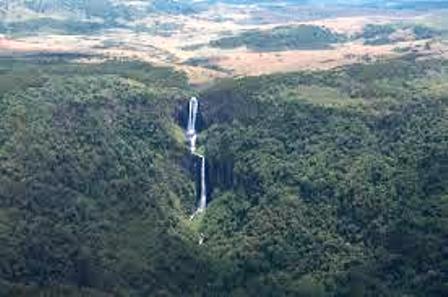
Highland grassland (0.05%) occurs above c.2,400 m on either side of the central Rift Valley (in the Kinangop and Mau Narok / Molo Grasslands. This restricted habitat is not covered in any protected area and is one of the most endangered in Kenya.
Many tussock-forming grass species occur. Other important grassland types include fire-induced grassland (3.1 %, e.g. parts of the Masai Mara) and seasonal floodplain and delta grassland (4.7%, e.g. the Tana River Delta). Grassland also occurs on alkaline volcanic ash (0.2%), e.g. to the south of the Chyulu Hills.
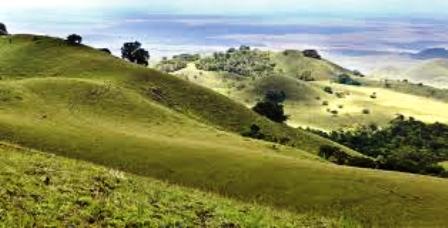
Highland moist forest (2.0%) occur between c.1, 500 m and 3,000m in areas that receive rainfall of more than 1,200 mm per year. A mosaic of forest and bamboo Arundinaria alpina is often present at the higher levels.
Typical montane forest trees include species of Podocarpus, Olea, Juniperus and Newtonia, but the forest type varies greatly according to altitude and rainfall.
Relicts of Guineo-Congolian rainforest (0.1%) occur in western Kenya, in and around Kakamega Forest. Despite its relatively high altitude (1,600m), in terms of biogeography Kakamega is the easternmost outlier of the great tract of tropical rain forest that once extended across equatorial Africa.
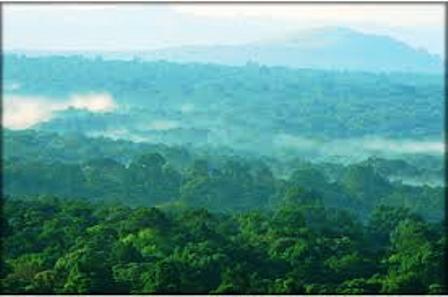
The average annual rainfall is over 1,900 mm, and typical tree species include Celtis, Aningeria, croton, Fagara and Manikara.
The North and South Nandi Forests are transitional between the Guinea-Congolian and Montane forest forest types.
Several types of coastal forests and woodland (0.1%) characteristic of the Zanzibar-Inhambane Mosaic vegetation region, occur along the narrow coastal strip.
These patches are mainly small and relictual, and the forest structure and composition vary greatly according to soil type and rainfall. Characteristic trees include Cynometra, manikara, Afzelia, Brachylaena and Brachystegia.
Coastal evergreen bushland (0.4%) also occurs, in a mosaic with cultivated land; this is almost always a secondary vegetation type . Coastal palmstands, often in tall grassland, are a rare vegetation type covering ess than 3.1% of the land area.
They are concentrated near the Ramisi River in the south, and around the Tana River Delta in the north. Elsewhere, highland dry forests (0.4%) occur on hilltops that attract mist and rain (e.g. Mt Marsabit and the Taita and Chyulu Hills.
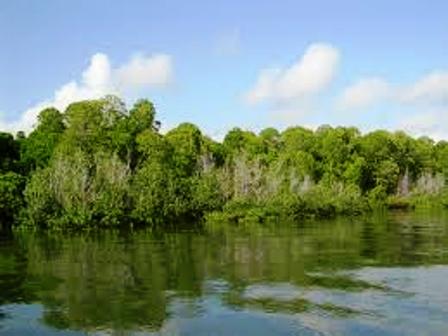
Riverine forests (e.g. along the Mara River) and groundwater forests (e.g. Kitovu) together make up c.1.5% of the land area.
Thorn bushland and woodland are the most extensive vegetation types in Kenya (41.7%), running from Amboseli in the south through the Tsavo parks to north-east and north-west Kenya.
Characteristic tree species are Acacia, Commiphora ssp., while grasses include species of Hyparrhenia, Digitaria and Themeda. This habitat often contains concentrations of large mammals and many large protected areas are in this vegetation zone.
It is often favourable for ranching and pastoral land. This vegetation grades into semi-arid wooded and bushed grassland (0.2%).
The north-central and northwestern parts of the country are covered by semi-desert (16.8%) with characteristic shrubby thornbush species, mainly Acacia.
In places, such as the Dida Galgalu and Chalbi deserts and around Lake Turkana, areas of barren land (0.4%) occur, with very little vegetation. Marine beaches and dunes make up another 0.04% of the land area.
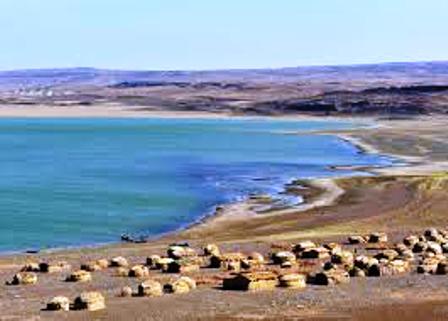
Wetlands are an important habitat in Kenya, covering about 14,000 km sq of the country’s land surface (Crafter et al. 1992).
Strongly alkaline Lakes (0.04%), mainly in the Rift valley, lack macrophytes, except at river inflows, but may have large blooms of microscopic plants - notably the cynaophytes Spirulina spp.
Papyrus swamps, consisting largely of stands of cyperus papyrus, are found patchily around the shores of Lake Victoria, mainly along river inflows.
Elsewhere this habitat is widely scattered, with notable patches at Lake Naivasha and Lake Jipe. (Only Lake Victoria’s papyrus holds the suite of bird species specialized on this habitat) Swamps of other Cyperus species, Typha and Phragmites occur locally but are rarely of any great size.
Permanent swamps make up 0.11% of the land area, while bodies of freshwater cover 2.1% of Kenya’s surface area.
Mangrove swamps (0.2%) occur along parts of the Kenyan shoreline, especially in sheltered creeks and estuaries.
Eight species of mangrove occur, the commonest of which is Rhizophora mucronata. Lamu district has the country’s most extensive mangrove swamps.
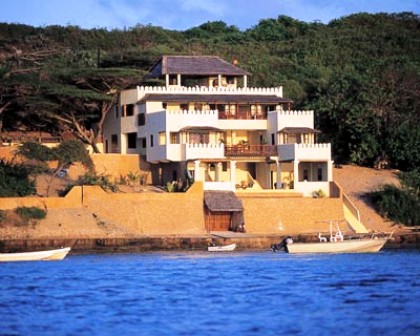
On sandy shorelines are often beds of seagrass (some twelve species are recorded), beyond the littoral zone or in deeper channels within it.
Coral reefs and islands make up some 59,000 ha, or 0.1% of the land area. Human-modified habitats, created at the expense of the natural vegetation, occur throughout the country but especially in the highlands.
These include cultivated land under a wide variety of crops (18%), plantations of exotic trees, secondary thicket and scrub, eroded and de-vegetated woodland and bushland, and overgrazed pastureland.
Flora and Fauna in Kenya
Wildlife in Kenya is not confined to the parks and reserves although it is generally more abundant in such areas.
Thus, although safaris tend to be routed through the parks and reserves, a visitor will often see plenty of wildlife outside.
On an arranged safari, a visitor should have little difficulty in recording between 30 and 40 species of mammals and at least 150 bird species.
From the reptile family one is certain to see crocodiles and quite a few lizards, large and small. Much of the land in game reserves is savannah: rich pasture shaded with trees, and it is here that the antelope herds are mainly found.
A remarkable harmony where several species can graze the same land, each eating different grasses and herbs and no one species so numerous as to interfere with the domain of others.
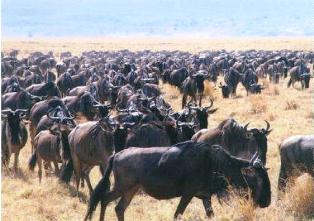
Antelopes come large and small; the largest - the eland weighs in at around 600 kilos, a hundred times the weight of the dainty dik dik.
Wildebeest, among the most numerous of antelopes, share their grazing with zebra and are naturally gregarious but the smaller antelopes such as the suni, oribi and duiker are rarely found in any numbers; indeed they are almost always solitary or in pairs.
These are the antelopes, which inhabit patches of thick cover found in the savannah, and some of them, like the duiker, have evolved with shorter forelimbs thereby making the dive for cover easier. 'Duiker' means diver in Afrikaans.
Where there are antelopes, there are also carnivores- lion, leopard, cheetah, hunting dog, and hyena, the latter as much a hunter in his own right as the more familiar tag of a scavenger.
Lion and leopard are rarely found making a kill in daylight. Not so the cheetah, who needs to be able to see to use his principal weapon, speed.
Visitors will see a range of the smaller carnivores - serval cat, genet and jackal are examples. Jackals are also predators, particularly the beautiful golden-backed (or oriental) species that, again contrary to popular concept, rarely scavenge.
Even the most common jackal, the black-backed, finds only one third of its food from scavenging.
But of the predators, the average visitor first seeks out the lion. A guest is unlikely to be disappointed for they are quite common in most of the parks and reserves but nowhere more numerous nor more splendid than in the Masai Mara.
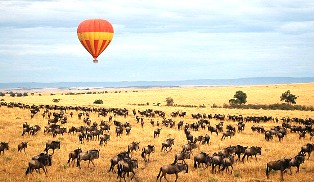
Lions spend a good deal of the day sleeping or dozing becoming alert in the early evening especially when the need to feed exists.
Lions are remarkably selective in their tastes. On the whole, they kill antelope and zebra, but warthog, baboon, ostrich and jackals are all killed and eaten. A lion eats around 20-25 kilograms at a meal, sometimes more.
Elephant range across a wide spectrum of habitats from the hot coastlands to the cold moorlands of the Aberdares and Mount Kenya at 3600 meters.
Very few other animals have this range. Elephants are found in most of the parks, herds of 100 or more can be found in Meru, Amboseli and sometimes in Samburu.
Despite their great size, elephants are remarkably passive when not bothered. The need to maintain its vast bulk (some 150-200 kilogram of forage a day) keeps an elephant on the move and constantly active - even at night, the incessant search for food continues. It is this restlessness, which makes elephant watching so rewarding.
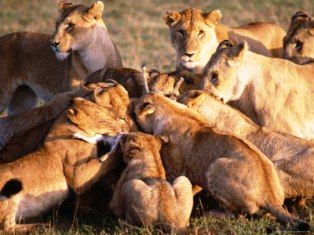
The wanton destruction of the rhino, throughout the whole of Africa, has severely reduced the rhino population to the point where it has become necessary to relocate most of the remaining few into safe sanctuaries.
Nairobi National Park, Lake Nakuru National Park, Lewa and Tsavo all now hold many rhino populations although in the Masai Mara, in the forests of the Aberdares and Mount Kenya, it is still possible to find rhino, which have not been translocated.
The best time to see them is in the early morning for in the heat of the day, they return to thick bush, as their heat absorption capacity is poor.
Giraffes too roam the savannah with little competition for the tender leaves of the acacia trees, which are their principal food. The reticulated species, found north of the equator, must be one of Kenya's most striking animals.
The lakes, swamps, rivers and riverine forest support their own specialized wildlife. Hippo, of course, irritable and cantankerous, share their habitat with the little loved crocodile.
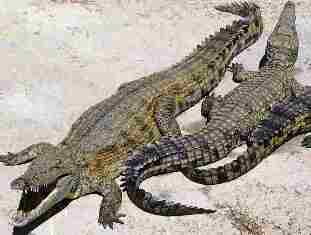
The largest concentration of crocodile, anywhere, is to be found in Lake Turkana and at Sibiloi Park, the numbers are especially great with as many as 50-60 crocodiles per kilometer of beach.
Crocodile feed mostly on fish of which our rivers and lakes hold a considerable variety; the Nile perch found in Lakes Victoria and Turkana is a notable species reaching enormous proportions - 50-kilogram specimens are quite common.
The cape (or African) buffalo, judged by most conservationists to be the most dangerous of big game, inhabits grassland where there is preferably thick cover and swamp in which to lie up, but like the elephant it is also adapted to life in dense and cold forest.
Yet ferocity is clearly not the mark of buffalo in groups. Their herds, which can be numbered in many hundreds, are quite timid.
This is not the place to describe the wealth of wildlife in any detail. Suffice to glimpse, this great pageant in anticipation of a visit.
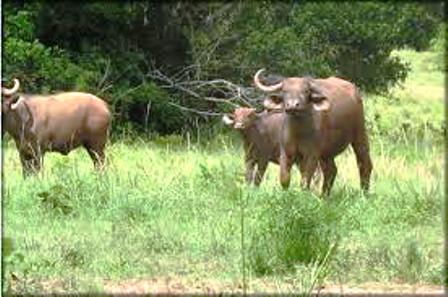
Birdlife in Kenya
Kenya has a vast variety of species, over 1000, in a vast variety of habitats. From Montane forest to tropical coast, in every conceivable altitude range: deserts, open savannah grassland, lowland forest, bush and scrub, lakes and mudflats.
This huge variety of birds is made possible by the lack of climatic extremes. Kenya straddles the equator and has no 'winter' as such - only wet and dry seasons. In the northern latitudes, huge numbers of birds migrate south to avoid the harsh on coming winters.
From as Far East as the Bering Straits and as far west as the northern tip of Norway - they come in millions to East Africa. It has been estimated, give or take a few million, that as many as 6,000 million birds make the journey each year.
Combine the migratory birds to the incredible variety of local birds, and you have an ornithological paradise. Of great importance to those planning bird safaris is that birds can be found in abundance outside the national parks.
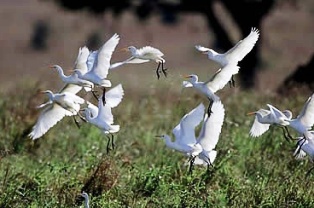
There are many areas of Kenya covering the same wide variation of habitat, which do not have national park status.
In these places, game may be scarce but birds are always present. Examples are Lake Magadi, only 110 kilometers south of Nairobi in the Rift Valley; Kakamega Forest in Western Kenya, a remnant of the great rain forest that once covered much of East Africa; Lake Naivasha 90 kilometers north of Nairobi; and the thousands of hectares of farmland, private ranches and even suburban gardens in Nairobi. All these areas are prolific in birdlife.
Other Pages of Interest
Kenya Sports | Kenya Tea | Kenya Map | Kenya Volunteer Forum | Kenya Religion | Shipping to Kenya | Walking Safaris in Kenya Africa |Recent Articles
-
Garam Masala Appetizers ,How to Make Garam Masala,Kenya Cuisines
Sep 21, 14 03:38 PM
Garam Masala Appetizers are originally Indian food but of recent, many Kenyans use it. Therefore, on this site, we will guide you on how to make it easily. -
The Details of the Baruuli-Banyara People and their Culture in Uganda
Sep 03, 14 12:32 AM
The Baruuli-Banyala are a people of Central Uganda who generally live near the Nile River-Lake Kyoga basin. -
Guide to Nubi People and their Culture in Kenya and Uganda
Sep 03, 14 12:24 AM
The Nubians consist of seven non-Arab Muslim tribes which originated in the Nubia region, an area between Aswan in southern
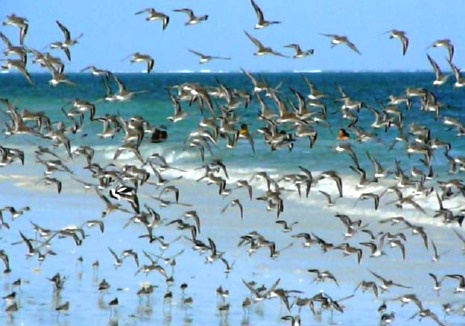
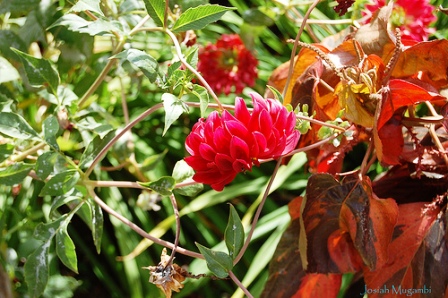





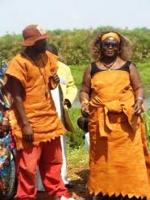

New! Comments
Have your say about what you just read! Leave me a comment in the box below.